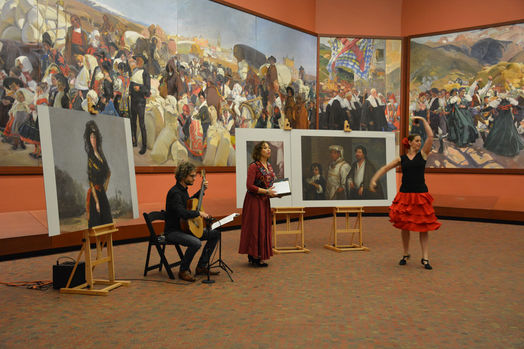
Three Hispanic Women

Three Hispanic Women: Bringing Paintings to Life
Song and Dance from 18th Century Spain, Puerto Rico and Mexico
The 18th century was an interesting and rich time for music, dance, art and culture in the Spanish-speaking world. Using music, song and dance demonstrations, as well as narration and storytelling, a costumed Spanish dancer, classical singer and classical guitarist lead students to experience the richness and diversity of 18th-century Spanish America, concluding with reflective activities that lead students to finding connections with their own forms of expression.
During the interactive portion of the workshop following the performance, students learn of the story of three women in the portraits from the collection found at Hispanic Society of America Museum and Library, located in Upper Manhattan, embarking on a journey of music, fashion, art and dance between Spain and the New World.
Curriculum Goals:
-
Students will learn about the following three paintings: “Mestizo and Indian produce Coyote” (Mexico, 1720) by Mexican painter Juan Rodriguez Juárez; “Doña María Catalina de Urrutia” by Puerto Rican painter José Campeche y Jordán (Puerto Rico, 1788); and “La Duquesa de Alba” by Spanish painter Francisco Goya y Lucientes (Madrid, 1799).
-
Learn to sing and dance three songs from the time of these women, by Fernando Sor and Graciano Tarragó from Spain, and Juan García Zéspedes from Mexico.
-
Dances will draw inspiration from the 18th-century escuela bolera and folkloric traditions, blending classical technique with regional styles.
-
Through a concluding Q/A reflective activity, Teaching Artists engage in a discussion about identity and its connection to clothes and fashion.

Photo Gallery
Use the red arrow to scroll to the right and view more photos














